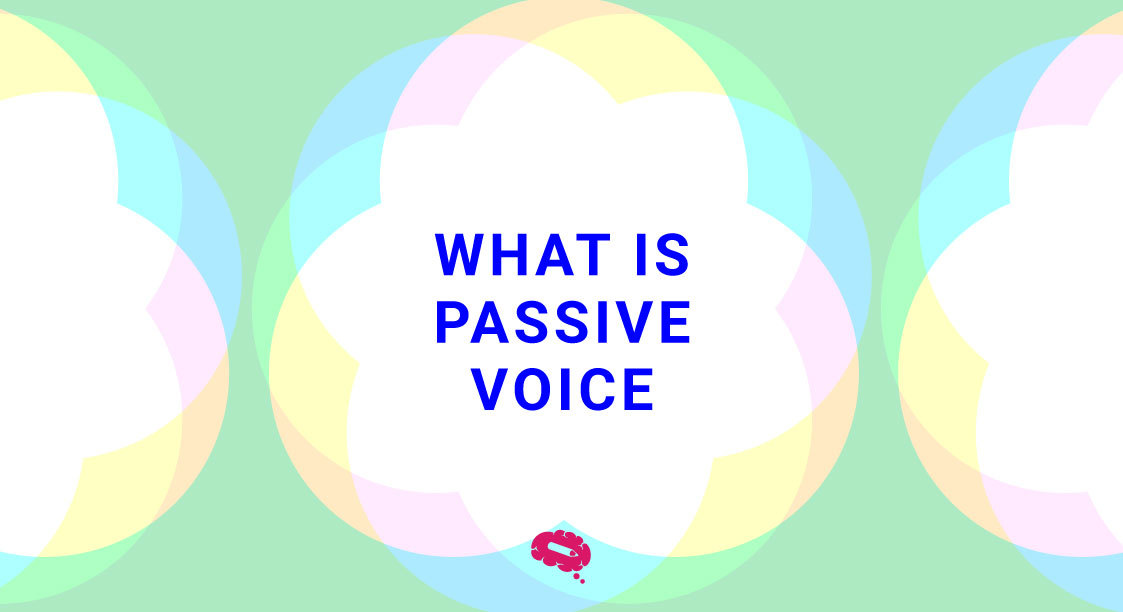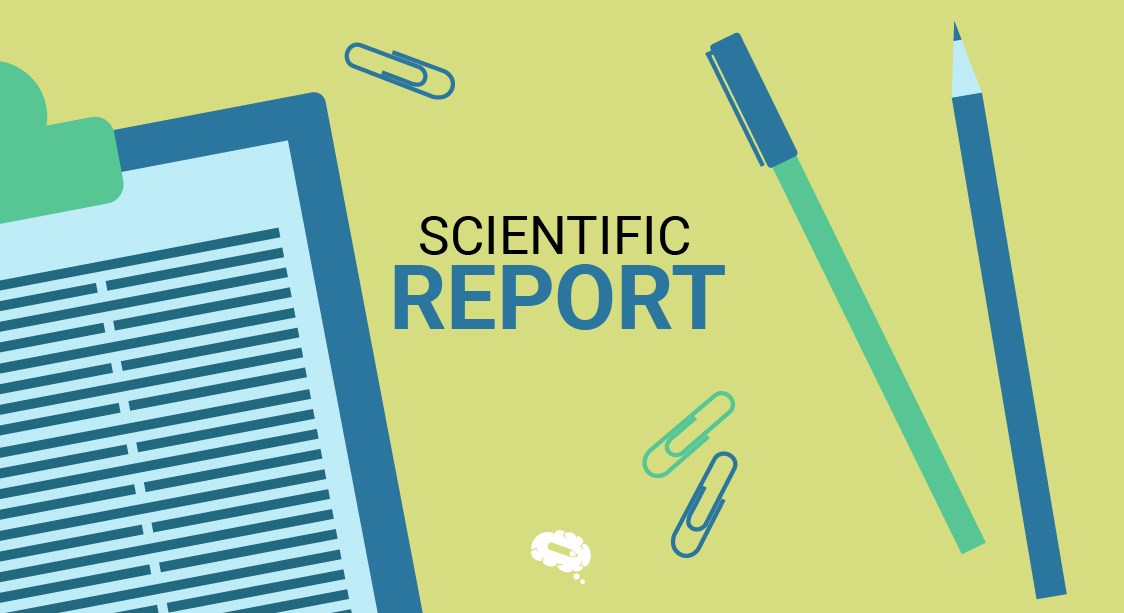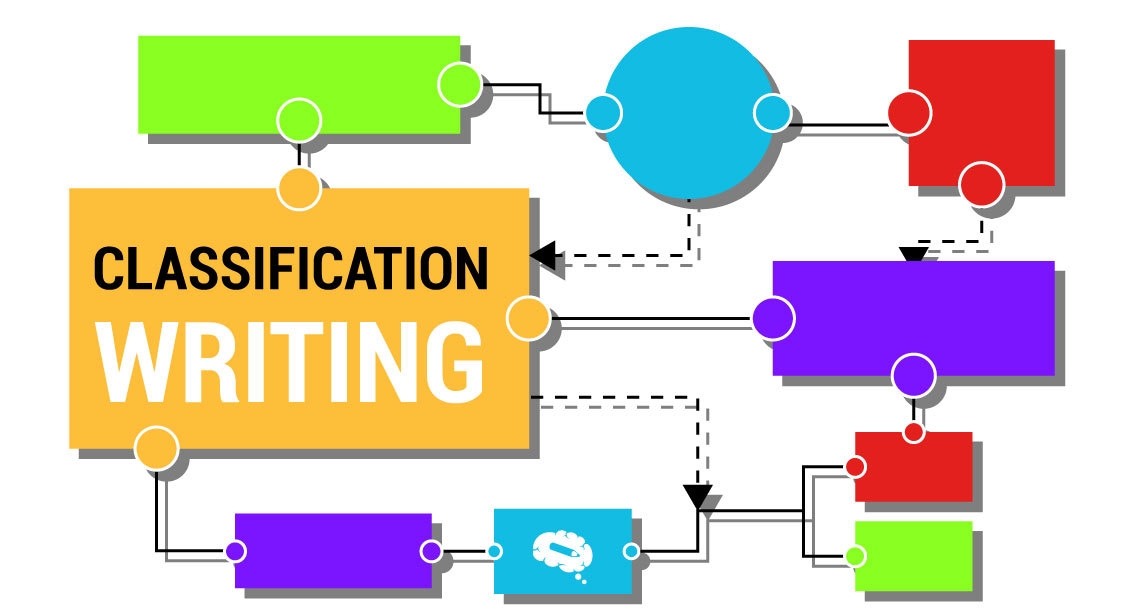Understanding passive voice is essential in enhancing scientific communication, particularly for scientists and researchers looking to improve their writing clarity. The passive voice construction is characterized by the object of an action becoming the subject of a sentence, emphasizing the action rather than the doer. In scientific writing, the passive voice is commonly used to convey objectivity and focus on results rather than individuals.
In this guide, we will delve into the nuances of passive voice usage, exploring its significance, applications, and potential impact on scientific communication for both beginners and professionals seeking to refine their writing skills for scholarly publications.
Introduction to Passive Voice
Understanding the Concept
When we ask “What is passive voice?,” we’re referring to a specific grammatical construction. In passive voice sentences, the focus is on the action being performed rather than the person who is performing the action. For example, in the sentence “The experiment was conducted,” the doer of the action, likely the researcher, is not mentioned. This is different from the active voice, where the subject performs the action, such as “The researcher conducted the experiment.”
Passive voice is recognized by its form, which typically consists of the verb ‘to be acted upon’ in various tenses followed by a past participle. For instance, “was conducted” or “has been analyzed” are passive constructions. This structure shifts the emphasis to the action or the object affected by the action, which can be useful in scientific writing where the process or result is often more important than the experimenter.
Understanding when and how to use passive voice is crucial for clear and precise scientific communication.
The Use of Passive Voice in the English Language
Passive voice plays a significant role in the English language by allowing speakers and writers to emphasize certain elements of their sentences for a variety of purposes. It is passive voice misuse is common in formal writing, where the actor is either obvious, unimportant, or unknown. For instance, in statements like “A decision was made” or “Innovations have been introduced,” the emphasis is placed on the action itself, rather than on who made the decision or introduced the innovations.
In everyday conversation, passive constructions of verbs might be less frequent, as active voice often makes sentences more direct and vigorous. However, passive voice finds its place when the subject of the action is irrelevant or when one aims to be vague or impersonal, such as in official documents or news reports.
Writers might also opt for passive voice to bring variety to their sentence structure or to change the focus of the information. Knowing how to use both active and passive voice sentence structures is important for effective communication.
The Role of Passive Voice in Scientific Communication
How Passive Voice Impacts Readers’ Comprehension

The passive voice can both aid and hinder readers’ comprehension. On one hand, it can clarify scientific writing by focusing on the results or methods rather than the researchers. It removes the subjective element, presenting a more neutral and objective stance. This can make the findings appear more universally applicable, as the passive voice implies that the results could be replicated by anyone following the same procedures.
On the other hand, overuse of active and passive voices and constructions can lead to ambiguity, especially if it’s unclear who the actors are in the research process. Sentences can become longer and more complex, making them harder to follow. Readers might struggle to understand the sequence of actions or to grasp the cause-and-effect relationships that are crucial in scientific research.
Balancing passive voice with active voice can therefore enhance clarity and keep the writer and the readers engaged, making the text more accessible and easier to digest.
Passive Voice in Scientific Writing: A Historical View
Historically, the passive voice has been a staple in scientific writing. This trend can be traced back to when scientists started to systematically document their findings written for the public. The goal was to create a universal voice that diminished the role of the individual and highlighted the research itself. By using passive voice, scientists could present their findings as unbiased and independent of personal influence, which was crucial in a field where the reproducibility of results is key.
Over time, the passive voice became associated with formality and credibility in scientific discourse. Researchers have often favored this passive construction as a way to sound more objective and to let the facts speak for themselves. However, this preference has been challenged in recent decades, with many arguing for a return to a clearer, more direct active voice, which could make scientific papers more accessible and engaging.
The conversation around passive voice reflects evolving attitudes about what constitutes effective scientific communication and how best to convey complex ideas to a broad audience.
Enhancing Academic Writing: The Power of Passive Voice
When writing scientific papers, the passive voice can be an effective tool to highlight research and findings rather than the researcher. Here are some examples of how to use the passive voice effectively:
1. Methodology and Procedures
In academic writing, the passive voice is commonly used to describe procedures and methodologies. This approach emphasizes the process rather than the individual performing the task.
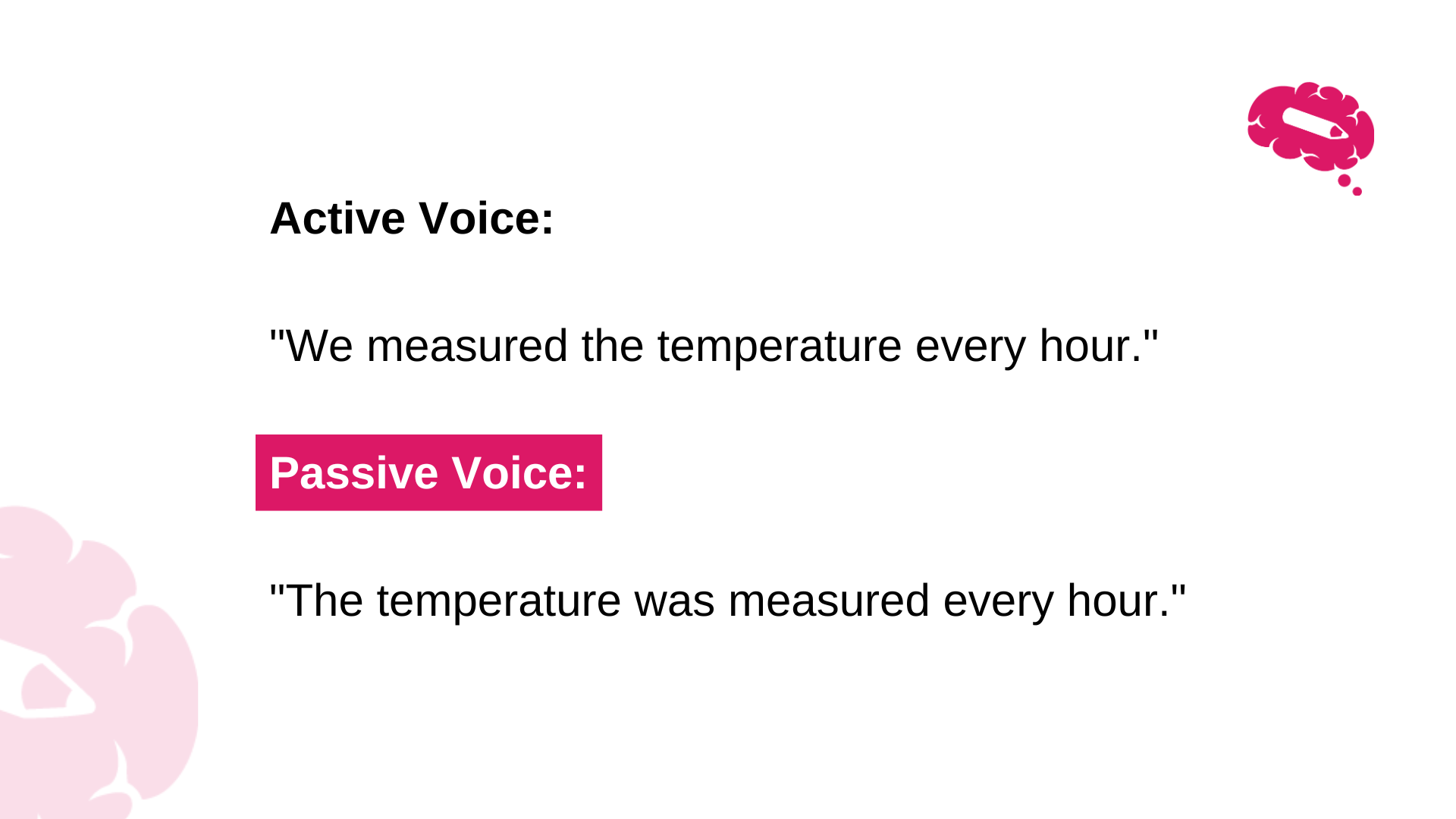
2. Results and Findings
Presenting results in a passive voice can make the findings appear more objective and detached from the researcher, thus focusing on the data itself.
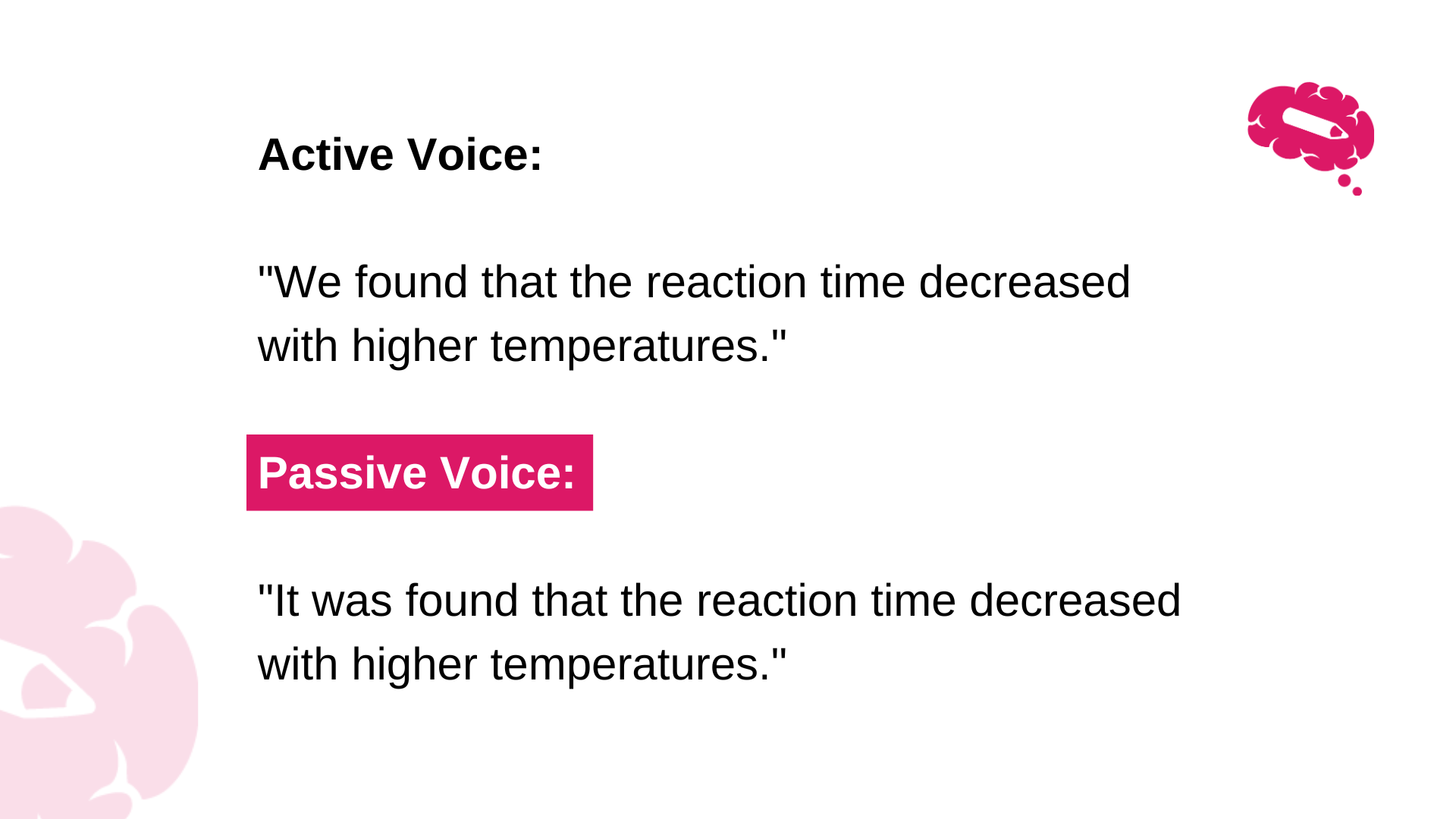
3. General Statements and Conclusions
Passive voice is often employed to make general statements or to summarize conclusions without attributing them to a specific person.
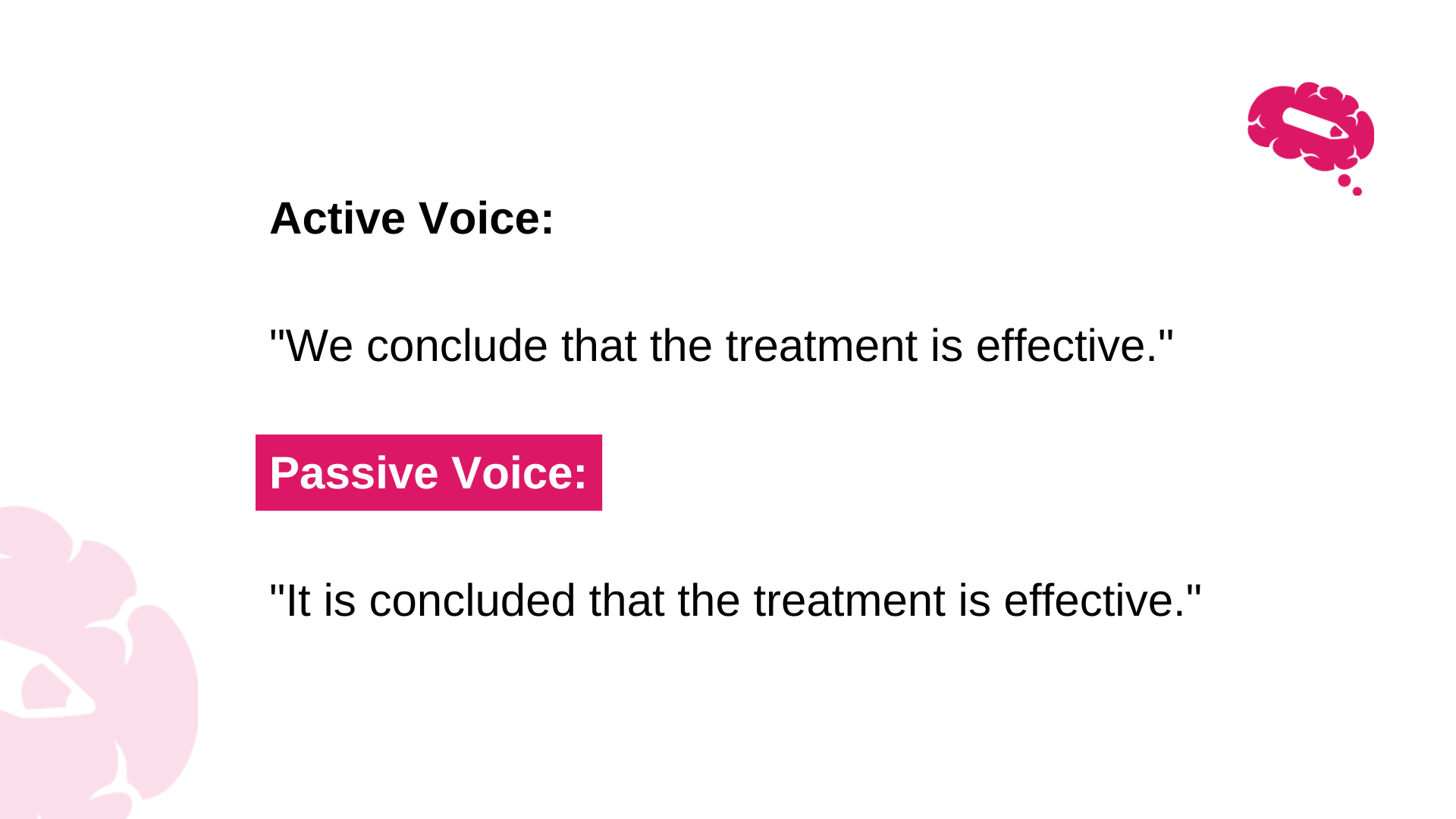
4. Emphasizing the Action
When the action itself is more important than who performed it, the passive voice is a useful structure.

5. Literature Reviews
In literature reviews, the passive voice helps to present the state of research without focusing on the researchers themselves.
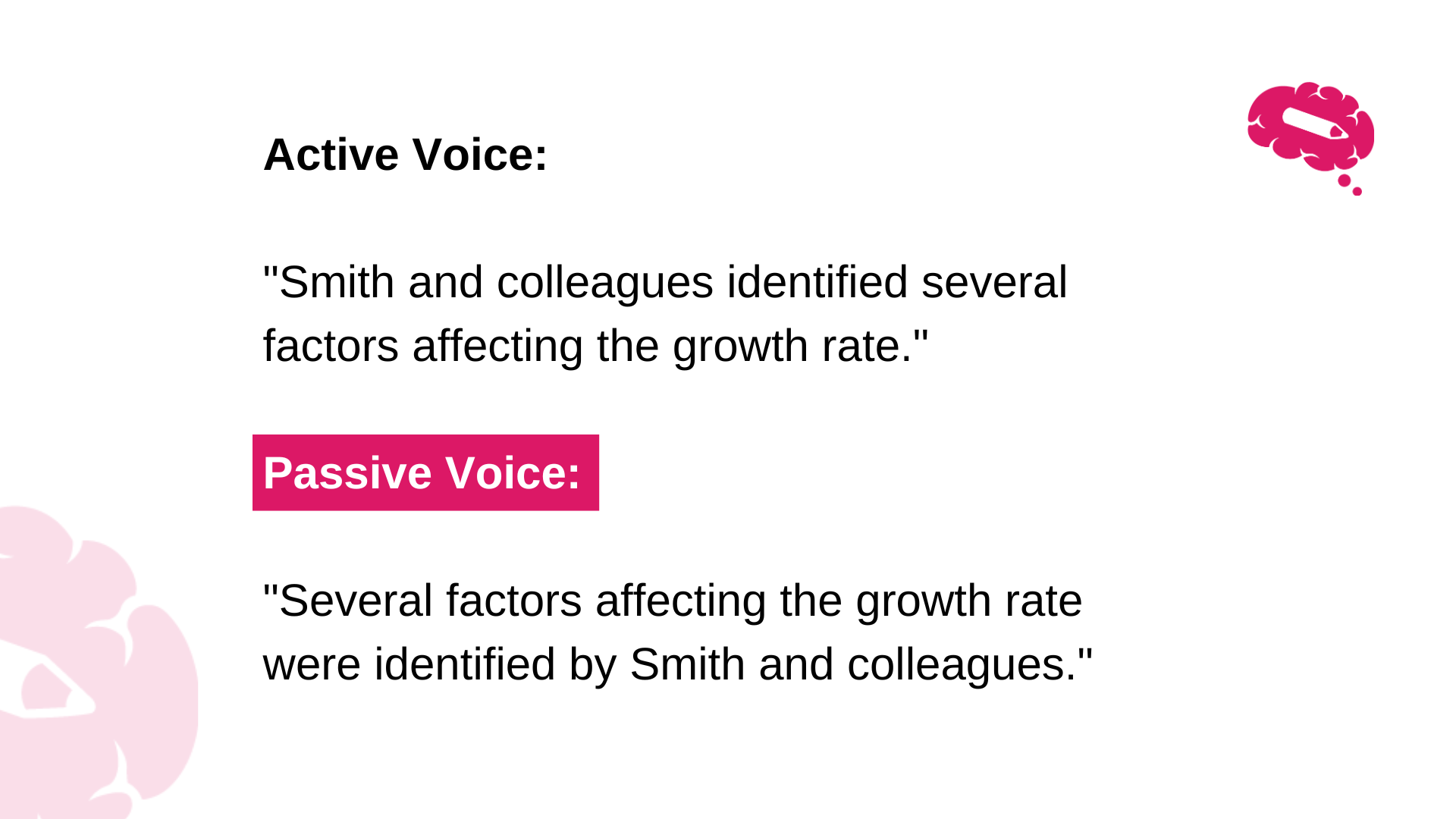
Pros and Cons of Using Passive Voice
The Benefits of Passive Voice in Scientific Writing
The passive voice can be quite beneficial in scientific writing. One of the main advantages is that it allows researchers to emphasize the most important aspects of their work, such as the methods and results, rather than who performed the experiments. This can make the text feel more objective, as the passive voice abstracts the action from the actor, suggesting that similar results could be obtained by any competent researcher.
Additionally, passive constructions can help maintain a formal tone, which is often expected in scientific literature. It can also assist in creating a sense of continuity across different sections of a research paper, by keeping the focus consistently on the research process or findings rather than the researchers.
Furthermore, passive voice can be useful in cases where the identity of the actor is unknown or irrelevant, making it a versatile tool in a scientist’s writing arsenal, particularly when documenting procedures and outcomes.
The Drawbacks and Criticisms of Passive Voice
Despite its benefits, passive voice in scientific writing has its drawbacks and has faced criticism. One major concern is that it can make sentences longer and more complicated, potentially obscuring the meaning and making it harder for readers to follow the narrative. Clarity and brevity in awkward sentences are often sacrificed for formality, leading to dense, less approachable text.
Critics also argue that the use the passive voice can lead to ambiguity, especially when it’s not clear who is responsible for the action. This lack of clarity can be particularly problematic in procedural descriptions, where understanding who performed an action may be crucial to replicating the study.
Furthermore, excessive reliance on passive constructions can result in a monotonous tone that fails to engage readers. Active voice, in contrast, can make scientific writing more dynamic and relatable, thereby enhancing the reader’s interest and comprehension.
The key criticism, therefore, revolves around the potential for passive voice to decrease readability and reader engagement, which are vital components of effective scientific communication.
Shifting from Passive to Active Voice
Transforming from Passive to Active Sentences
Transforming sentences from recognizing passive voice to active voice can significantly improve the clarity and impact of scientific writing. To make this transformation, identify the agent performing the action and reposition it as the subject of the sentence. For example, instead of writing “The experiment was carried out by the team,” you would write “The team carried out the experiment.”
This shift not only shortens and simplifies the sentence but also adds clarity by specifying who is responsible for the action. In active voice, the subject is doing the action, making the sentence more direct and powerful. This can be especially useful in scientific writing when you want to highlight the difference between the researchers’ roles or the sequence of actions in a procedure.
Additionally, using active voice can make the writing more engaging for the reader, which is particularly important in abstracts, introductions, and discussions, where the research’s significance and implications are discussed. Active voice brings energy to these sections, helping to convey the researchers’ enthusiasm and commitment to their work.
Case Studies: Active vs. Passive Voice in Scientific Texts
Examining case studies where active voice has been used in place of passive voice in scientific texts reveals clear benefits. For instance, a research paper might originally state, “The samples were analyzed using spectroscopy.” Converted to active voice, it becomes, “We analyzed the samples using spectroscopy.” The latter sentence not only sounds more direct and engaging but also personalizes the research process, making the work feel more relatable and grounded.
Another example shows examples of the shift in emphasis: “It was found that the drug inhibits bacterial growth” can be changed to “The drug inhibits bacterial growth.” Here, the active voice removes unnecessary words and presents the finding more confidently and succinctly.
These case studies demonstrate that using active voice can make scientific texts more readable and engaging without sacrificing accuracy or objectivity. While passive voice has its place, the strategic use of active voice can enliven scientific narratives and make them more impactful.
Communicating Scientific Ideas Effectively
Strategies to Balance Active and Passive Voice
Balancing active and passive voice in scientific writing requires strategic thinking about the purpose of each sentence. A good strategy is to use active voice when introducing the study’s aims, discussing the implications of findings, or when describing actions taken by the researchers. This approach can make the sentences written the text more compelling and easier to understand.
Passive voice, on the other hand, can be effective when the process or result needs to be the focal point, or when the actor is unknown or irrelevant. For example, describing the results of an experiment or the standard method used in a field may be best done in passive voice to maintain an objective tone.
Writers should read each sentence critically to determine the best voice, considering factors such as clarity, emphasis, and readability. Varying sentence structure by mixing active and passive voices can also help maintain the reader’s interest and ensure that the writing does not become monotonous. It’s about finding the right balance of voices to communicate scientific ideas as clearly and effectively as possible.
Making Scientific Writing Engaging with Active Voice
Active voice can transform scientific writing from a passive recount of facts into a compelling narrative. It makes the text more engaging by bringing the researchers and their actions to the forefront, personalizing the scientific journey, and making the story behind the data more relatable. For instance, saying “We discovered a new compound” is more immediate and impactful than “A new compound was discovered.”
To harness the power of an active writing voice, scientists should consider their audience and the story they want to tell. Engaging writing often involves showing the process of discovery, the challenges overcome, and the human element behind the research. Active voice can convey enthusiasm and the active role researchers play in their field.
By judiciously using active voice to highlight the most intriguing or critical aspects of their work, scientists can capture their readers’ attention. This approach not only makes the writing more accessible but can also inspire and educate a broader audience.
Mind the Graph: The Power of Visuals in Research Papers
In addition to mastering the nuances of passive voice, incorporating high-quality visuals is another essential element of effective academic writing. Visuals such as graphs, infographics, and illustrations can significantly enhance the clarity and impact of your research paper by providing clear, concise, and visually appealing representations of complex data. They help readers quickly grasp key findings and concepts, making your research more accessible and engaging.
At Mind the Graph, we specialize in creating professional scientific illustrations and infographics that can elevate the presentation of your research. Our tools enable you to craft visually stunning and informative graphics that seamlessly integrate with your academic content. With Mind the Graph, you can ensure that your visuals are not only scientifically accurate but also visually compelling, helping you communicate your findings with greater effectiveness and precision.

Subscribe to our newsletter
Exclusive high quality content about effective visual
communication in science.

